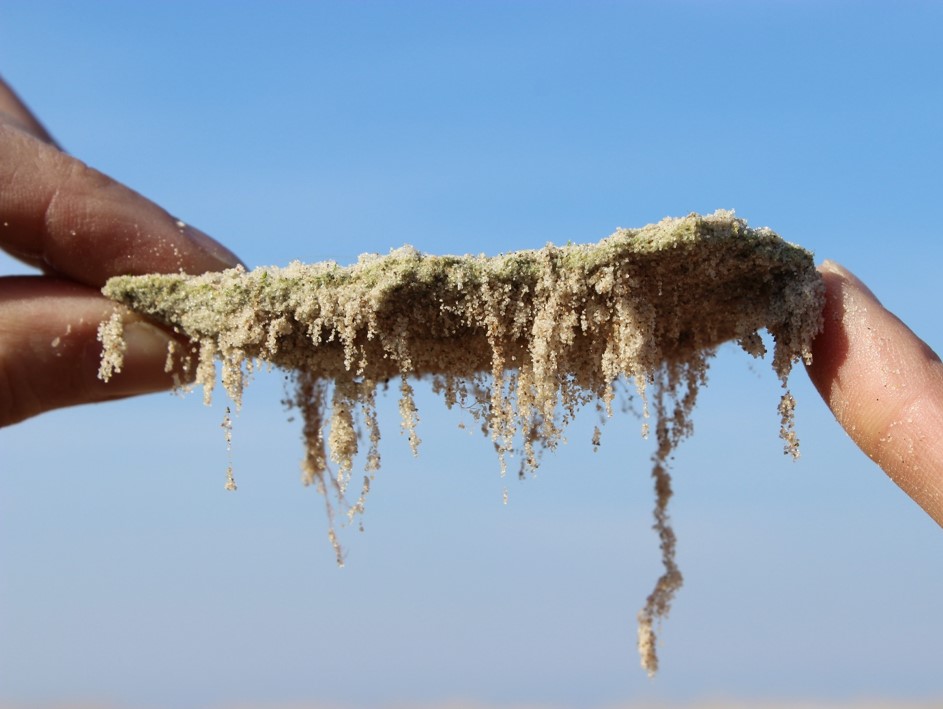DuneCrust: Biodiversity and ecological function of diatoms in biological soil crusts of coastal dunes
Dunes are the first line of physical defense against the sea at many natural coasts. Growth of coastal dunes depends on sediment supply and stability, which is influenced by biotic (vegetation cover) and abiotic factors (wind, waves and precipitation). Although coastal dunes are protected by law in Germany, they experience strong disturbance along public beaches due to trampling, mechanical cleaning or permanent structures, which hinder wind-mediated natural sand replenishment.
Growth and development of a closed vascular plant cover are limited due to low nutrient and water supply, except for anthropogenically planted beach grass. Under natural conditions only specialized organism groups can establish, such as biological soil crusts (biocrusts). Biocrusts are formed by living organisms and their by-products, creating a top-soil layer of inorganic particles bound together by sticky organic compounds.
This project aims to enhance the fundamental understanding of ecosystem functioning conducted by terrestrial diatoms in coastal dune biocrusts under the influence of human impact. Therefore, samples will be taken from various dunes along a gradient of anthropogenic disturbance. Ecological functions of biocrusts will be measured with a combination of field work and lab experiments. Biodiversity and abundance of terrestrial diatoms will be estimated using a morphological and molecular methods. This study will also clarify whether terrestrial diatoms can be used as bioindicators for disturbance of coastal sand dunes.
On June 30th, the NDR showed a report about the research project.

